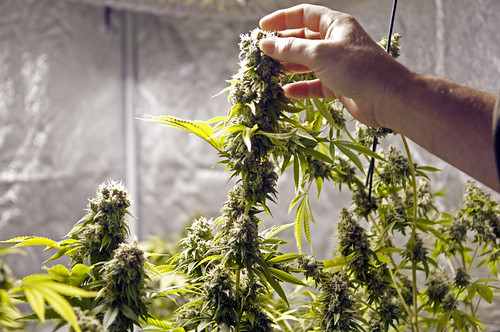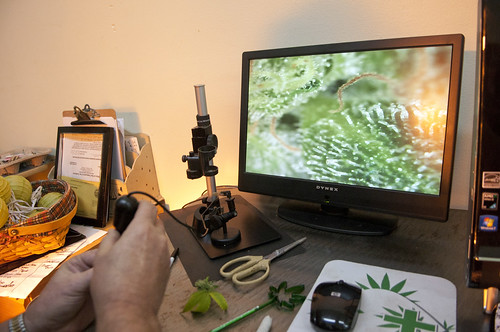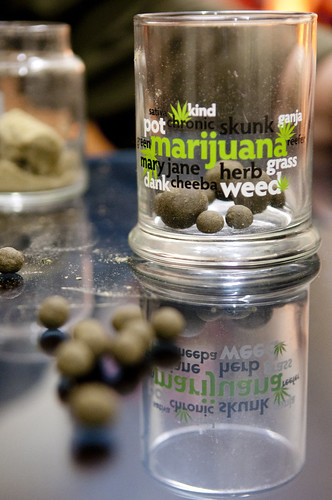
According to marijuanadoctors.com, you can get a medical marijuana card if you have a major illness or condition that substantially limits your ability to conduct one or more major life activities, as defined in the Americans with Disabilities Act of 1990 (Public Law 101-336) and if not alleviated, may cause serious harm to the patient’s safety or physical or mental health.” If you have back pain you can receive the same marijuana as a cancer patient.

Zenia Gilg, a renowned marijuana rights attorney, says that once a doctor issues you a medical marijuana card, no one can take it away except the doctor. Prescriptions tend to expire after one year and are easily renewed with another visit to your doctor. Rechif says that most doctors only require one visit, which is when you get the prescription, and then follow up visits are always optional unless you have a serious health problem.
Once you get a medical marijuana card, you’re free to head over to a licensed dispensary (which is the same thing as a “pot club”) and buy whatever medicine you need. California Cannabis Club’s directory says that there are more than thirty clubs spread throughout San Francisco, including the Green Room, which is right in the middle of downtown’s shopping and hotels, and Medithrive, which is a few blocks from the 16th Street and Mission Street BART stop. With a valid card, you can buy pretty much anything you want: hybrids, sativa, indica, edibles, pre-rolled joints, and clones. Whatever you want, a dispensary probably has it.
Medithrive is one of the more popular dispensaries in the Mission, if not in the entire city. If you aren’t looking specifically for the club, you will easily miss it. The only thing that announces it is a small easel that has Medithrive’s basic contact information.
There is absolutely no distinctive marijuana odor leaking out when the door opens, and no scent lingering in the lobby. Heck, there isn’t even any smell by the display.
Why doesn’t this medical marijuana dispensary smell like pot? It’s probably because there isn’t anywhere to actually use what you’ve just bought. Anything you buy, you have to take home with you, because unlike some other clubs there isn’t a lounge. That is probably a good thing too, since there isn’t a lot of extra square feet anywhere in the facility. As of right now, the owners of the club are turning the garage into an office for staff to work and relax in, since the room (which is really more of a closet) they have now isn’t cutting it.
Seven months ago, Russell Vasques decided that he wanted to do more than just use Medthrive’s products, so he started working for the club. While he works, he stands vigil next to the door, opening it for anyone he sees through the only narrow window. He asks people for their cards, types the information into the computer and if it checks out, the patron is free to go in and buy whatever they need. Vasques says sometimes people come in with fake cards, hoping to sneak past him, but he’s never worried that they’ll actually succeed.
Once you get past Vasques, you’re free to wait in line and buy what you need. Rechif, the store’s manager, says that Medithrive’s line of edibles is by far the most popular product. They have brownies, chocolate bars, caramel corn, truffles, lollipops, peanuts, pretzels, and even hot sauce, most of which are sativa dominant. The store’s line of flowers is readily displayed in little vials on the counter, which Rechif says gives the customer a better idea of what they’re buying. There’s no set customer favorite between indica flowers (the more calming, mellow type) and sativa (more energizing and happy).
“People definitely have a favorite,” he says. “But our sales are pretty much fifty-fifty.”
Right now, Medithrive has around 24 thousand clients, many of whom are regulars. For such a popular business, it’s hard to believe that it almost never opened. San Francisco’s zoning laws say that marijuana dispensaries cannot be within one thousand feet of schools, and what’s behind Medithrive? Marshall Elementary School. But thanks to a monthly contribution to the school and other community organizations, Medithrive was allowed to open its doors with the school’s blessing.
But don’t think you’re completely safe smoking your joint just because you have a shiny new medical marijuana card. Zenia Gilg says that federal agencies such as the Drug Enforcement Agency can come in to California and arrest anyone they see using marijuana. Medical marijuana is perfectly legal in California, but it’s still illegal on the federal level. Despite this, Gilg doesn’t think that the federal laws will beat state law.
“All indications are that if this issue comes before the Supreme Court, the Court will find that the state may decriminalize the medical use of cannabis while the federal government continues to prosecute,” Gilg believes.
If you don’t have a card, don’t be too afraid. In 2011, California’s Health and Safety Codes added section 11357 to decriminalize possession of weed. Under the code, anything less than 28.5 grams is punishable by a $100 fine and no jail time. Anything more is punishable by up to six months in jail and a fine of $500.
In 2010, California lawmakers tried to pass the Regulate, Control, and Tax Cannabis Act (better known as Prop 19). If the law had passed, it would have made possessing and using pot legal in private places and establish a public place to legally purchase the drug (kind of like a dispensary without a prescription).
Local governments would be able to regulate how much cannabis citizens could possess or sell, and be able to tax whatever cannabis they allowed. The law also details harsher punishments for anyone who sells the drug to minors. When it came time for Californians to vote on Prop 19, 46.5 percent of voters wanted it passed.
Walking down a picturesque street, complete with a white picket fence in front of a blue single story house and a child walking a fluffy black Shih Tzu, no one would ever expect what is going on inside one of the cars parked along the sidewalk. Specifically the dark blue Subaru Impreza that would look brand new except for one or two scratches marking its rear door. The tinted windows prevent passersby from looking in the car and seeing the naughty activity going on inside it. The smoke could also be a factor in what outsiders see. It’s not too bad now, but the party can’t start yet.
This car belongs to Erik, who doesn’t want his last name to be revealed because of what he and his friends are doing. His friend Tony pulls a slightly used joint out of an empty box of Marlboro cigarettes as Erik reaches into his pants pocket to pull out his scratched and well-used lighter. After a few seconds of shuffling around, he finally reveals his prize and turns around to hand the lighter to Tony, who greedily takes it and lights up. After a long drag, Tony reluctantly passes the joint to Erik, who takes an even longer drag. This back and forth continues for a few minutes, and a few hazy exclamations of “dude,” until Tony decides that he’s late for work and needs to leave. Apparently, that’s Erik’s cue to kick his friend out of the car, which he does all too willingly.

Even though he just turned 18 and has been using pot for the past two years, Erik hasn’t bothered to get a card.
“Why would I do more [work] than I have to?” he asks, as he runs a hand through his freshly cut hair. “It’s too easy to find a dealer and get it without one. [And] it’s not like cops care.”
“Even my mom doesn’t care,” he laughs. “As long as she doesn’t smell it, she’s ok with me smoking. Well, maybe not ‘Ok,’ but whatever.”
But until the recreational use of marijuana is legalized in California, it’s probably safer just to go to a doctor and have him write a prescription. Who knew a doctor’s note would ever be useful outside of school?

